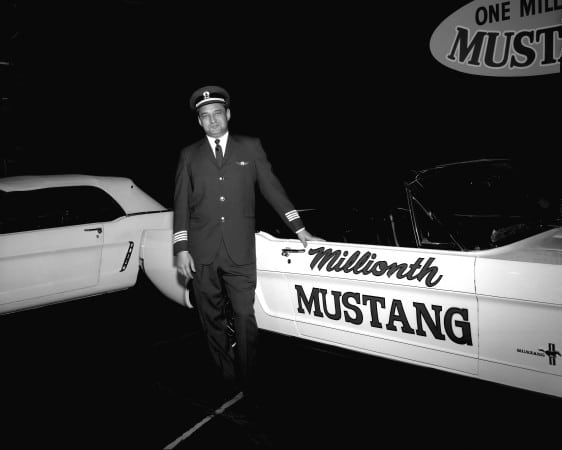By the time the 1965 Ford Mustang officially went on sale on April 17, 1964, it had been rolling off the assembly line at the Rouge factory in Dearborn, Mich., for about five weeks. Thousands of Mustangs had been shipped to dealers throughout North America so they would be available in showrooms on opening day. However, not all of the cars on display were actually meant to be sold to customers.
Among those was a Wimbledon White convertible with serial number 5F08F100001 that had been delivered to George Parsons Ford at the far eastern end of Canada in St. Johns, Newfoundland. That car, along with about 180 other early examples, was not meant to be sold to customers. These preproduction models were supposed to be used for internal testing and promotional purposes only.
The next day, however, Eastern Provincial Airlines pilot Capt. Stanley Tucker saw the sleek new convertible and knew he just had to have it. Tucker convinced Parsons to sell it to him. As more than 22,000 orders and sales had poured in opening weekend, no one back at Ford world headquarters in Dearborn at first realized the significance of that particular sale.
Once it became known a couple of weeks later that Mustang number 1 had been inadvertently sold, Ford officials reached out to Tucker to try to buy it back. Tucker was having so much fun with his new car that he initially declined to sell it back to the company. Eventually, Tucker and Ford struck a deal.
On March 2, 1966, less than two years after Mustang production began at the Rouge assembly plant, Tucker brought the first Mustang back to Dearborn and turned in the keys for a brand-new example. For an encore, Tucker got the 1-millionth Mustang produced – another white convertible.
Ford Motor Company later donated Mustang number 1 to the nearby Henry Ford Museum, where it resides to this day.












